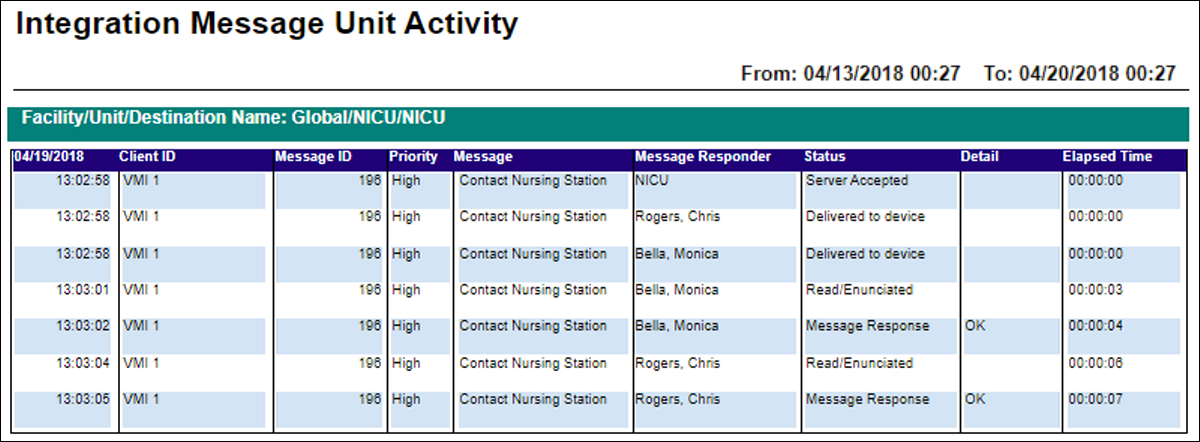[Data Source: VMI] Provides details about messages sent from Vocera integration Partners through VMI to groups, listed in chronological order. This information helps you determine the efficiency of staff response time.
The information displayed on the screen is determined based on the filters that you apply. The available filters are:
| Filter Name | Filter Description |
|---|---|
| Date Range | The date range to include in the results. By default, the value is the current date; however, you can select from a list of options. For example, you can select the option "Last 7 days" or "Last 30 days." |
| Facilities | Used to filter data based on user facilities (common facility name) specified while mapping Vocera Voice Server User Site and Engage Facility. |
| Units | Used to filter data based on user
units (common unit name). Common unit names are referenced from a
crosswalk table cwunit that are mapped from Vocera Voice Server User Department and Engage Units. Note:
The displayed units drop-down filter may be constrained due to the Facilities filter. Unknown Unit or Department display data for all users that are not part of any department selected within the Facilities filter. |
| Groups | Used to filter group interruptions
data based on Vocera Voice Server
Group and VMP distribution list. It displays groups,
departments, sub-departments, and VMP distribution lists. These groups
are filtered based on the group facility selected. Note: Filter displays
25 groups sorted based on group name. The filter fetches groups
based on the search criteria.
|
| Clients | Used to filter VMI alert data based on the client ID. Lists the client Id specified while sending an alert using VMI API. |
| Priorities | Used to filter interruptions data based on its priority. Displays high, urgent, normal priority for VMP messages, VMI, and Vocera Voice Server. It also displays alarms and alert priorities from Engage. |
The figure below shows a graph from a sample Integration Message Unit Activity report.

The generated report data includes:
- Information about the routing and progression of urgent and non-urgent messages.
- Details about message activity data, including activity per group, with messages ordered by time.
- The elapsed time between message initiation and message termination.
- Information about how the message was initiated and the accepting responder.
